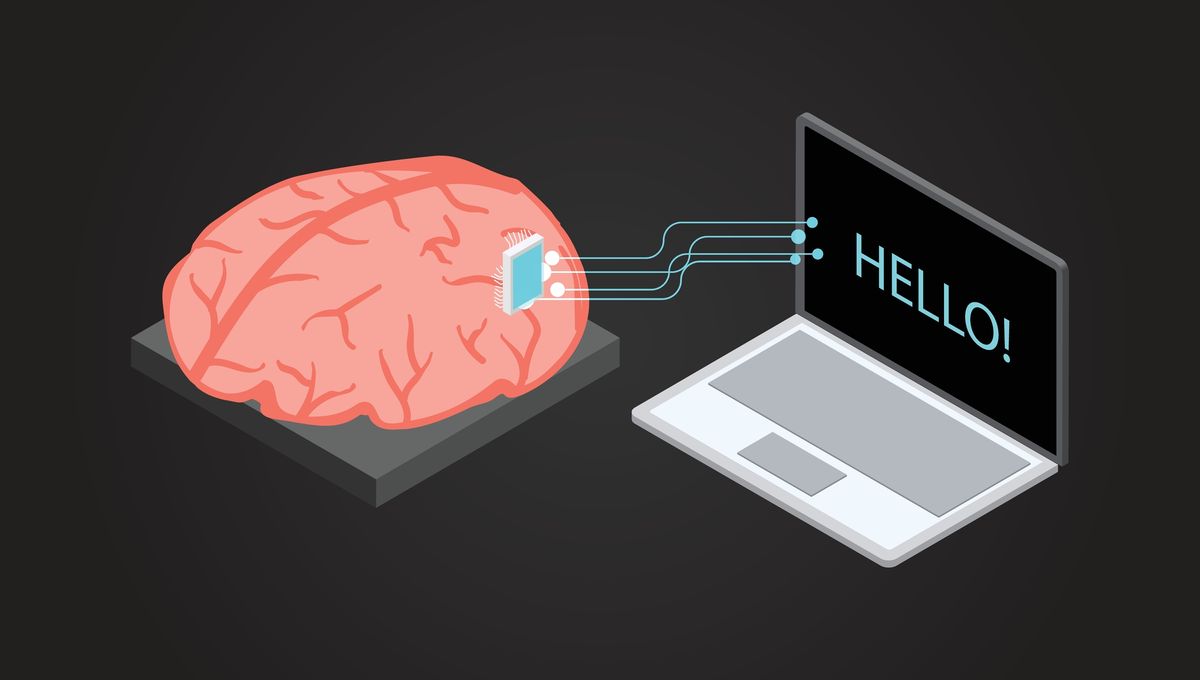Exciting advancements in brain-computer interfaces (BCIs) have been revealed in two new studies, demonstrating their potential to help patients who are unable to speak form sentences at a faster rate than ever before.
In one study, a patient with amyotrophic lateral sclerosis (ALS) had microelectrode arrays implanted in her brain to target speech production areas. The device was trained using neural activity as the patient attempted to speak, resulting in a dataset of 10,850 sentences. The remarkable outcome was speech decoding at a rate of 62 words per minute, 3.4 times faster than the previous record. The authors of the study highlight that the patient achieved a significantly lower word error rate compared to previous speech BCI technology, making it a groundbreaking achievement.
Dr. Frank Willett, the first author of the study, explained, “This system is trained to understand word sequences and phonemes, allowing it to make educated guesses even if some interpretations are incorrect.”
The patient herself expressed optimism about the potential impact of these advancements, stating that they could help individuals maintain relationships and continue working.
However, the study authors caution that the system is not yet a complete, clinically viable solution. They emphasize the need to reduce the training time required for the device, which averaged 140 minutes per day over eight days in this study. Additionally, they acknowledge that the current word error rate of 24 percent may not be low enough for everyday use, especially when compared to state-of-the-art speech-to-text systems with error rates as low as 4-5 percent. Nevertheless, with further improvements in language models and addressing non-stationarities, the word error rate was reduced to 11.8 percent in offline analyses.
The second study involved a patient who had suffered a brainstem stroke several years prior. The researchers trained deep-learning models using neural data collected while the participant silently attempted to speak sentences. The decoders achieved high performance with less than two weeks of training, resulting in accurate and rapid large-vocabulary decoding at a median rate of 78 words per minute, with a word error rate of 25 percent.
When translated into synthesized speech, the model had an error rate of 54.4 percent for a 1,024-word vocabulary and 8.2 percent for a 119-word vocabulary. The researchers personalized the patient’s synthesized speech to resemble her own voice, using a short clip extracted from a pre-injury video.
In addition, the researchers created a digital avatar capable of reproducing facial expressions, enhancing the communication experience. They utilized an avatar-animation system designed to transform speech signals into accompanying facial-movement animations for applications in games and film.
While these results are promising, it is important to note that they are based on a single participant. Further validation in patients with varying degrees of paralysis is necessary.
In the supplementary material of the study, the patient shared her emotional experience, stating, “The simple fact of hearing a voice similar to your own is emotional. Being able to speak aloud is very important.” She expressed her desire to become a counselor and use the system to communicate with her clients, believing that the avatar would make them feel more at ease.
Both studies have been published in Nature, showcasing the remarkable progress being made in the field of brain-computer interfaces.








